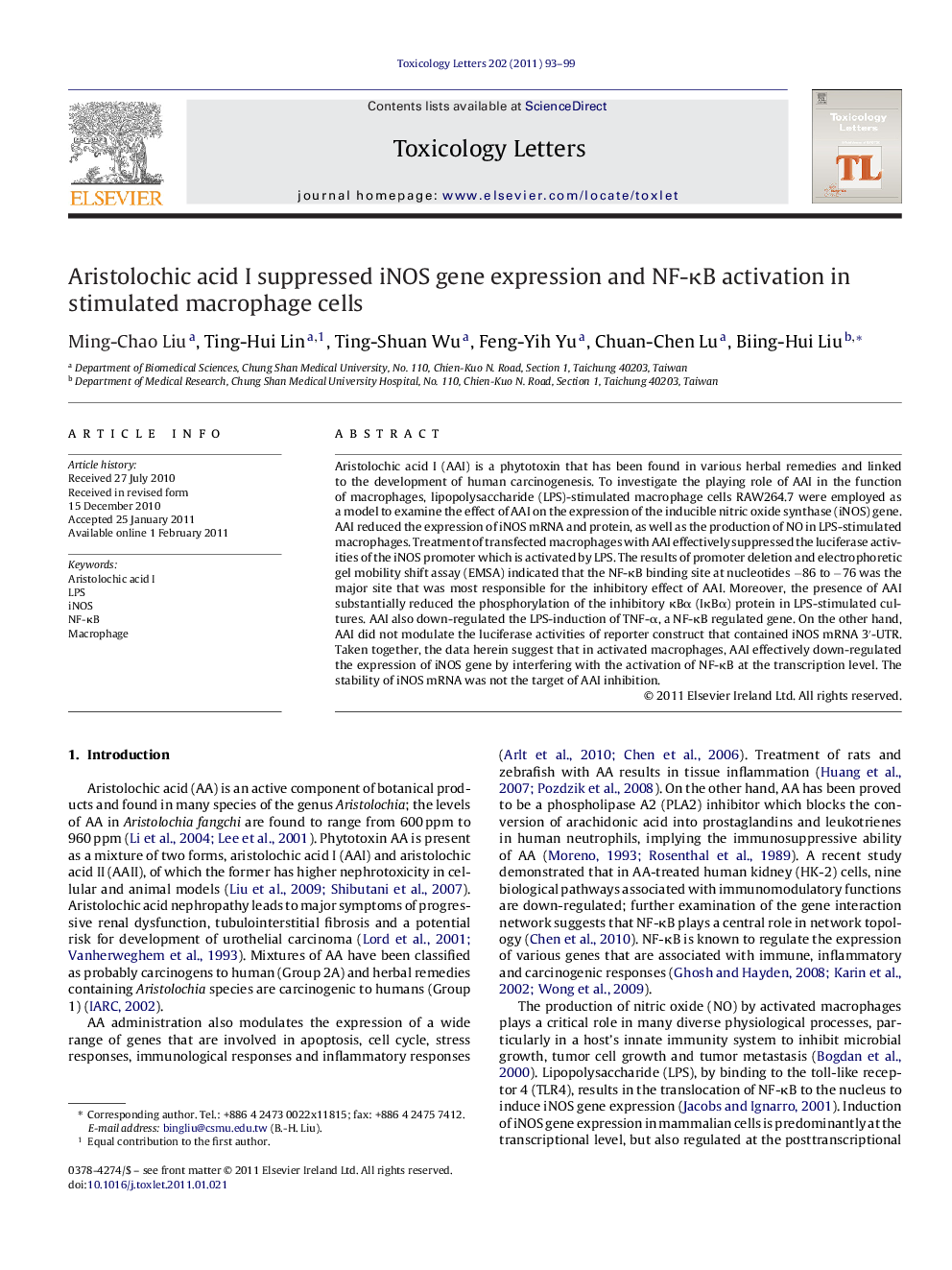| Article ID | Journal | Published Year | Pages | File Type |
|---|---|---|---|---|
| 2600132 | Toxicology Letters | 2011 | 7 Pages |
Aristolochic acid I (AAI) is a phytotoxin that has been found in various herbal remedies and linked to the development of human carcinogenesis. To investigate the playing role of AAI in the function of macrophages, lipopolysaccharide (LPS)-stimulated macrophage cells RAW264.7 were employed as a model to examine the effect of AAI on the expression of the inducible nitric oxide synthase (iNOS) gene. AAI reduced the expression of iNOS mRNA and protein, as well as the production of NO in LPS-stimulated macrophages. Treatment of transfected macrophages with AAI effectively suppressed the luciferase activities of the iNOS promoter which is activated by LPS. The results of promoter deletion and electrophoretic gel mobility shift assay (EMSA) indicated that the NF-κB binding site at nucleotides −86 to −76 was the major site that was most responsible for the inhibitory effect of AAI. Moreover, the presence of AAI substantially reduced the phosphorylation of the inhibitory κBα (IκBα) protein in LPS-stimulated cultures. AAI also down-regulated the LPS-induction of TNF-α, a NF-κB regulated gene. On the other hand, AAI did not modulate the luciferase activities of reporter construct that contained iNOS mRNA 3′-UTR. Taken together, the data herein suggest that in activated macrophages, AAI effectively down-regulated the expression of iNOS gene by interfering with the activation of NF-κB at the transcription level. The stability of iNOS mRNA was not the target of AAI inhibition.
